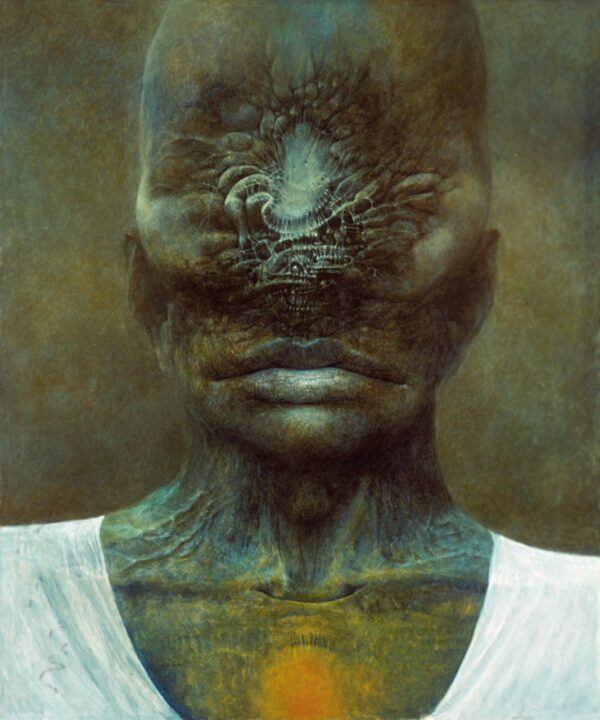Zdzisław Beksiński (1929 – 2005) was a Polish painter, photographer and sculptor, specializing in the field of dystopian surrealism. Beksiński did his paintings and drawings in what he called either a 'Baroque' or a 'Gothic' manner. His creations were made mainly in two periods. The first period of work is generally considered to contain expressionistic color, with a strong style of "utopian realism" and surreal architecture, like a doomsday scenario
"It misses the point to ask me what scenes in my paintings 'mean'. Simply, I do not know, myself. Moreover, I am not at all interested in knowing."--Zdzislaw Beksinski
After a childhood was spent during the Second World War, Beksinski went on to university where he studied architecture in Cracow. Subsequent to this education he spent several years as a construction site supervisor, a job he hated, frought with pressures and countless boring details. He would soon throw himself into the arts. In 1958, Beksinski began to gain critical praise for his photography, and later went on to drawing. His highly detailed drawings are often quite large, and may remind some of the works of Ernst Fuchs in their intricate, and nearly obsessive rendering.
Beksinski eventually threw himself into painting with a passion, and worked constantly, always to the strains of classical music. He soon became the leading figure in contemporary Polish art.
Beksinski began painting in oils on masonite around the year 1970. His ability to manipulate the effects of light quickly became a hallmark of his work, and can only be compared with the renown abilities of William Turner. Beksinski's paintings aremasterfully rendered, monumental enigmans. One thing they share is an aesthetic of beauty so potent that it overpowers any desperate nature of the given subject matter, as is similarly the case with Swiss artist, H.R. Giger. The paintings as a whole are wonderfully dark, and allow the viewer to interperet them as they will, as they will certainly get no help from this particular artist. As Magritte said: "The purpose of art is mystery."...."The blend of vivid colors in relation to other more subdued colors in my paintings is like a musical theme. As in a symphony, a motif occurs, is blurred, comes back in crescendo, is finally accentuated and becomes pure and complete."/Z.Beksiński/


























No comments:
Post a Comment